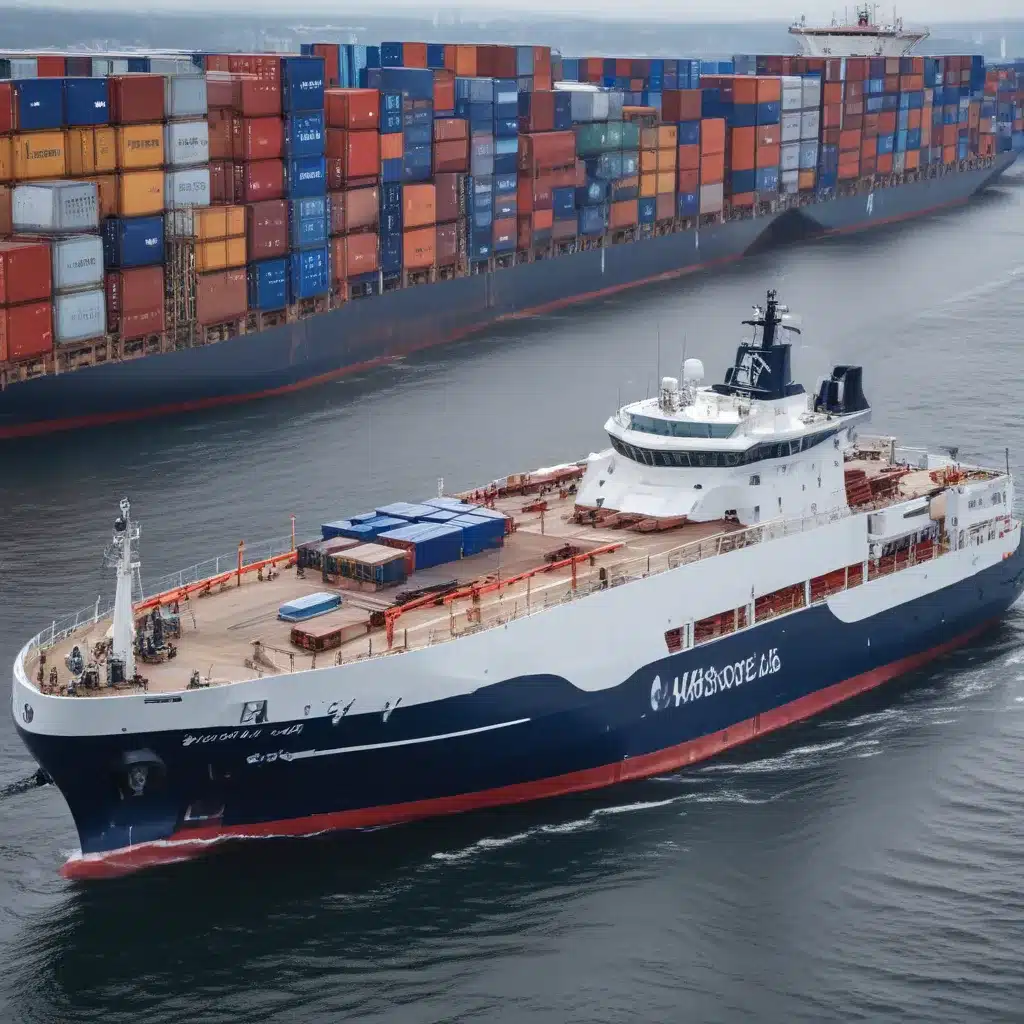Ahoy there, landlubbers! Step aboard as we embark on a journey to explore the cutting-edge world of autonomous shipping, powered by the tides of the Internet of Things (IoT). Buckle up, because this voyage promises to be as thrilling as a pirate’s quest for buried treasure.
The Quest for Ubiquitous Connectivity
Imagine a future where ships sail the open seas without a single soul aboard – a vision that’s quickly becoming a reality, thanks to a game-changing project co-funded by the European Space Agency (ESA). The mission? To guarantee uninterrupted data connectivity at sea, the holy grail for autonomous shipping [1].
“Remote monitoring and control of ships addresses the increasing need for qualified and skilled crew, as well as reducing the risk of ‘human error’,” explains SEAFAR’s Chief Commercial Officer, Janis Bargsten. But a major hurdle has been the ability to access seamless communications, ensuring captains in remote operations centers can keep a watchful eye on their seafaring fleets [1].
Enter neXat, a company on a mission to solve this connectivity quandary. Their platform automatically switches between 4G, 5G, and satellite communications, ensuring that critical data, including camera feeds and performance monitoring, is continuously shared. This allows for increased situational awareness in the remote operations center, keeping captains informed and in control, even when their ships are miles from shore [1].
Navigating the Autonomous Future
As we peer into the crystal ball of maritime innovation, the picture is crystal clear: autonomous ships are sailing full steam ahead. Companies like Furuno are spearheading the charge, with their Autonomous Navigation Systems Department dedicated to developing cutting-edge solutions [2].
“Challenge the Invisible” is Furuno’s rallying cry, as they collaborate with a consortium of industry heavyweights to create the world’s first unmanned vessel by 2025 [2]. From sophisticated sensors and algorithms to pioneering fleet management systems, these tech-savvy shipbuilders are rethinking the very design of vessels from the keel up.
But it’s not just about eliminating the crew – autonomous ships hold the promise of increased efficiency and sustainability. “With the challenge of climate change, many designers are looking towards solutions to propel their MASS (Maritime Autonomous Surface Ships) sustainably,” notes Yves Van Seters, an industry expert [3].
Whether powered by batteries, solar, wind, or even hydrogen fuel cells, these next-gen vessels are being engineered to minimize their environmental impact while maximizing performance. And the secret sauce? Data, data, and more data.
Sailing on a Sea of Data
These autonomous behemoths are data hogs, gobbling up information from GPS, weather forecasts, tidal patterns, and a veritable smorgasbord of onboard sensors. Using cloud computing, AI, and edge technology, they can crunch the numbers and plot the most efficient course, whether it’s the fastest, most fuel-efficient, or safest route [3].
“MASS amasses and processes a multitude of data to calculate the most optimal journey between ports,” Van Seters explains. “Data from GPS, weather, water, tidal, sensors monitoring the ship’s infrastructure and cargo is gathered and analyzed in real time to calculate the most optimal journey between ports for its cargo [3].”
But the data deluge doesn’t stop there. Vodafone’s maritime solution offers 4G coverage for 93% of the world’s coastlines, providing ship operators with near-shore connectivity and the ability to monitor vessel performance in real-time [4]. This hybrid approach, blending 4G and satellite communications, ensures captains can stay connected, even when their ships venture into the deepest, darkest corners of the ocean.
Ahoy, Automation!
As we sail further into the future, the role of automation in the maritime industry becomes increasingly apparent. Belgian startup SEAFAR is already putting their “shore-supported navigation” concept into practice, allowing captains to control vessels remotely from the comfort of their digital “cockpits” [3].
And it’s not just about remote control – AI is taking the helm, automating a whole host of tasks on board, from structural and mechanical monitoring to cargo management and even healthcare [3]. The result? Leaner, more efficient crews, focusing on the critical tasks while their robotic counterparts handle the heavy lifting.
Uncharted Waters Ahead
The journey towards autonomous shipping is not without its challenges, of course. Cybersecurity concerns loom large, as hackers could potentially seize control of these high-tech vessels, with disastrous consequences [5]. But as the industry continues to evolve, innovative solutions are sure to emerge, safeguarding these digital seafarers from harm.
“Automation may save lives by preventing collisions through better communication and faster response times and preventing pirates from taking hostages or killing the crew,” notes industry analyst Alexander Soley. “This means people must focus more on securing the ship, because people will have to make sure the ships are secured from outside hacking (or people hacking from inside the ship) — but that is increasingly true of connected, manual devices as well [5].”
As we bid farewell to the age of the traditional, crewed vessel, a new era of maritime commerce is dawning. With IoT-powered autonomous ships leading the charge, the future of global trade is set to be transformed, ushering in a new age of efficiency, sustainability, and safety on the high seas.
So, me hearties, hold on to your sea legs – the tides of change are upon us, and the voyage ahead promises to be nothing short of epic.
References
[1] IoT Business News. (2023, October 31). Autonomous Shipping to Get Satellite Connectivity Breakthrough. https://iotbusinessnews.com/2023/10/31/05155-autonomous-shipping-to-get-satellite-connectivity-breakthrough/
[2] Furuno. (n.d.). Product Solutions. https://www.furuno.com/en/marine-dx/
[3] Van Seters, Y. (2021, May 13). AI, AI Captain! The Future of Maritime Sets Sail with AI & Data. LinkedIn. https://www.linkedin.com/pulse/ai-ai-captain-future-maritime-sets-sail-data-13-yves-van-seters/
[4] Vodafone. (n.d.). Maritime Mobility. https://www.vodafone.com/about-vodafone/where-we-operate/voice-and-roaming-services/maritime-mobility
[5] Soley, A. (2018, April 25). Internet of Boats: Are Self-Driving Ships About to Set Sail? RTInsights. https://www.rtinsights.com/internet-of-boats-are-self-driving-ships-about-to-set-sail/
[6] Microsoft. (2022, October 11). AI and Cargo Shipping: Full Speed Ahead for Global Maritime Trade. https://news.microsoft.com/apac/features/ai-and-cargo-shipping-full-speed-ahead-for-global-maritime-trade/
[7] IoT World Today. (2021, June 1). Mayflower Autonomous Ship Makes Unmanned Atlantic Crossing. https://www.iotworldtoday.com/transportation-logistics/mayflower-autonomous-ship-makes-unmanned-atlantic-crossing
[8] Maritime Professionals. (2021, January 12). How Autonomous Ships are Revolutionizing the Maritime Industry. https://maritime-professionals.com/how-autonomous-ships-are-revolutionizing-the-maritime-industry/













